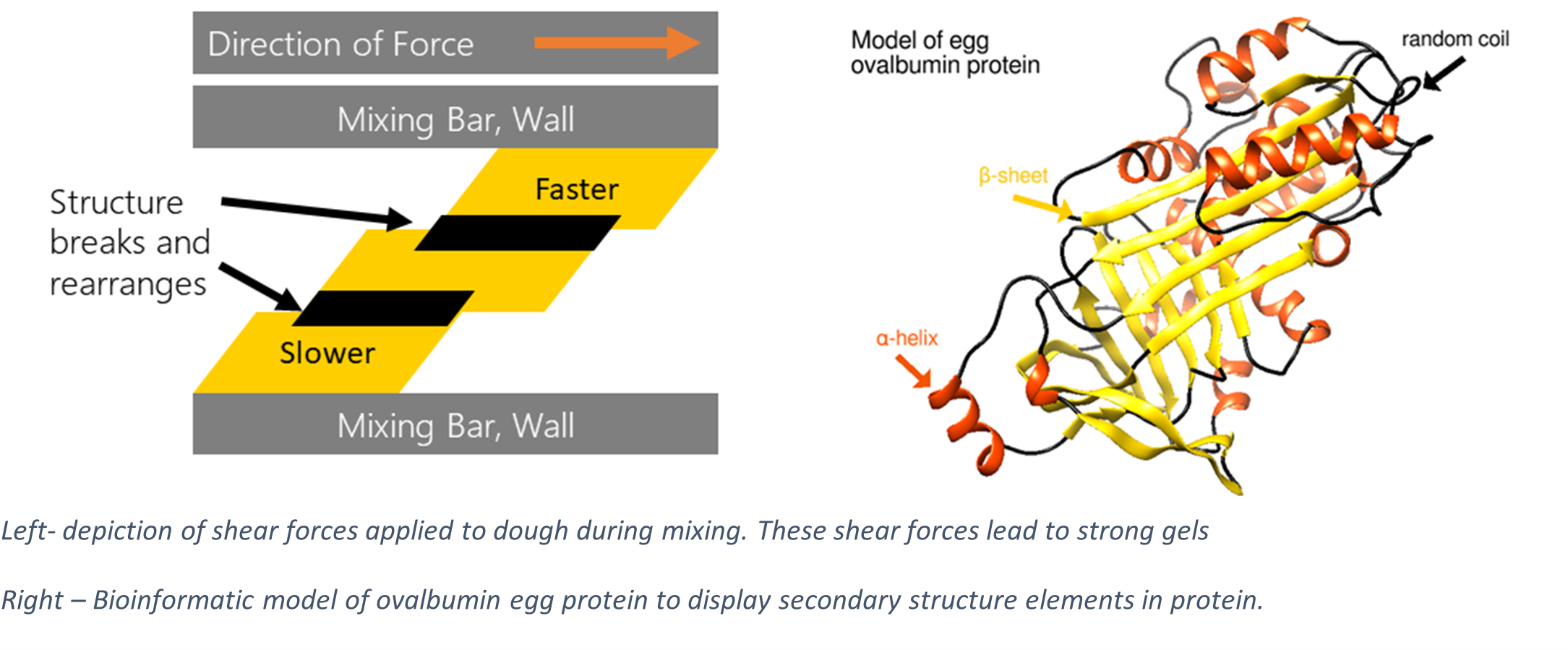Pro Tip: Employ different types shear forces to effectively provide strength and structure to your dough.
Shear forces can denature protein, which leads to the alignment of protein structures and strong gels
After all the flour, water, yeast and salt have been added to the mixing bowl, you turn it on to start bringing all of those ingredients into a cohesive stretchy dough.
After the initial pick-up phase when all of the ingredients come together, the dough goes into clean up, and you can hear it hitting the back wall or sides of the mixer. At this point, the mixer is applying shear forces to the dough.
Shear forces happen when part of the dough is moving faster and another is moving slower. This leads to lots of small breaks in the structure of the dough between these slower and faster moving parts, which allows for the creation of new bonds as the torn gluten proteins try to realign.
As mixing continues, these rearrangements keep happening in the direction of the shear force, and the gluten matrix starts to form long continuous filaments all throughout the dough, providing strength and structure.
 Source: Harrison HelmickAt the molecular level, protein has three types of secondary structure, β-sheets, α-helices and random coils, shown for ovalbumin in the figure below. These structures are defined by the amino acid sequences of the protein (its primary sequence), and secondary structures can come together to form larger tertiary structures as well. These secondary structures are correlated with certain end-use properties. For example, when proteins have lots of β-sheets, they tend to form stronger gels, and these structures are quickly measured on dry powders of protein using Fourier Transform Infrared Spectroscopy, or they can be modeled using bioinformatics.
Source: Harrison HelmickAt the molecular level, protein has three types of secondary structure, β-sheets, α-helices and random coils, shown for ovalbumin in the figure below. These structures are defined by the amino acid sequences of the protein (its primary sequence), and secondary structures can come together to form larger tertiary structures as well. These secondary structures are correlated with certain end-use properties. For example, when proteins have lots of β-sheets, they tend to form stronger gels, and these structures are quickly measured on dry powders of protein using Fourier Transform Infrared Spectroscopy, or they can be modeled using bioinformatics.
In wheat dough, after the dough is mixed, there is an increase in the proportion of β-sheets, and these structures are part of what leads to the unique properties of the dough.
However, increases in β-sheets are not unique to gluten. when shear forces are applied to pulse protein, milk proteins and others, there is an increase in the β-sheet content of protein, and these structures consistently lead to stronger gels.
Shear forces can be applied through mixing, blending, extrusion and any other type of processing equipment that can cause parts of the material to move at different speeds. These structural changes as the result of shear forces might help you get stronger gels out of the proteins that you use for egg or fat replacers, and shear force can be applied with other types of denaturation to gain unique properties from protein-based ingredients.
Harrison Helmick is a PhD candidate at Purdue University. Connect on LinkedIn and see his other baking tips at BakeSci.com.
His research is conducted with the support of Jozef Kokini, Andrea Liceaga, and Arun Bhunia.





